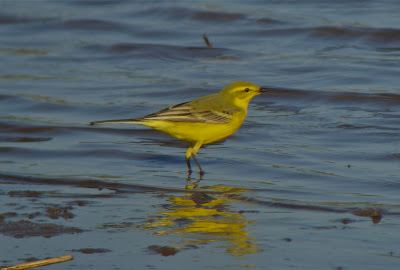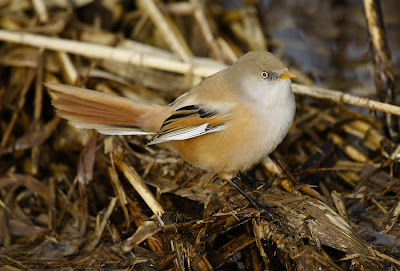 |
Arctic Tern - Shustoke Reservoir, Warwickshire
Photo by Dave Hutton |
With a nice, mild south-westerly wind blowing in I decided to take a trip to Shustoke Reservoir this morning rather than hit the local patch. The hope was to connect with an
Arctic Tern, a
Little Gull or maybe even a
Black Tern if I was lucky. Upon arrival a distant
Arctic Tern could be seen feeding down at the east end, an excellent start. After sheltering from a brief downpour,
Dave Hutton,
Steve Valentine and I decided to head around the reservoir in a clockwise direction for some better views.
 |
Kittiwake (second winter) - Shustoke Reservoir, Warwickshire
Photo by Steve Valentine |
Whilst making our way around, the long staying Kittiwake could be found showing exceptionally well as usual in the north west corner. A pair of Raven battled against the wind as they passed over and a scattering of Swallow and Sand Martin struggled through. It was then on to the extreme eastern end where we at last managed to enjoy some superb views of the Arctic Tern. It is always a real privilege to be in the presence of such a remarkable animal. As all keen birders are aware this most graceful of species witnesses two summers every year and flies over 44,000 miles per year to do so. It is amazing to think that a couple of months ago this bird would have been mingling with penguins and albatrosses down in the Antarctic region.
 |
Arctic Tern - Shustoke Reservoir, Warwickshire
Photo by Steve Valentine |
 |
Arctic Tern - Shustoke Reservoir, Warwickshire
Photo by Steve Valentine |
After watching the football I then made my way down to Alvecote early this evening in a mission to bag myself a
Yellow Wagtail or two. Despite a thorough search of all the likely spots I failed to find any. A total of 8
Eurasian Wigeon were still present on Teal Pool along with a
Common Snipe. Over on Mill Pool there were 12
Common Shelduck, 22
Gadwall and 18
Common Teal. A number of hirundines passed through including 5
Barn Swallow, 10
Sand Martin and a single
House Martin. I was just heading back to the car when I heard a call you only tend to hear whilst birding around the coast. Somewhere high above me was a
Sandwich Tern and frustratingly I could not see it. After what seemed like ages, a tern suddenly appeared out of nowhere and conveniently landed on the tern raft on Mill Pool. This is a very rare species indeed down at the patch and is pretty hard to come by in the whole of Warwickshire. Needless to say I was thrilled to bits with my find.
 |
Sandwich Tern - Alvecote Pools, Warwickshire
Photo by Adam Archer |


































